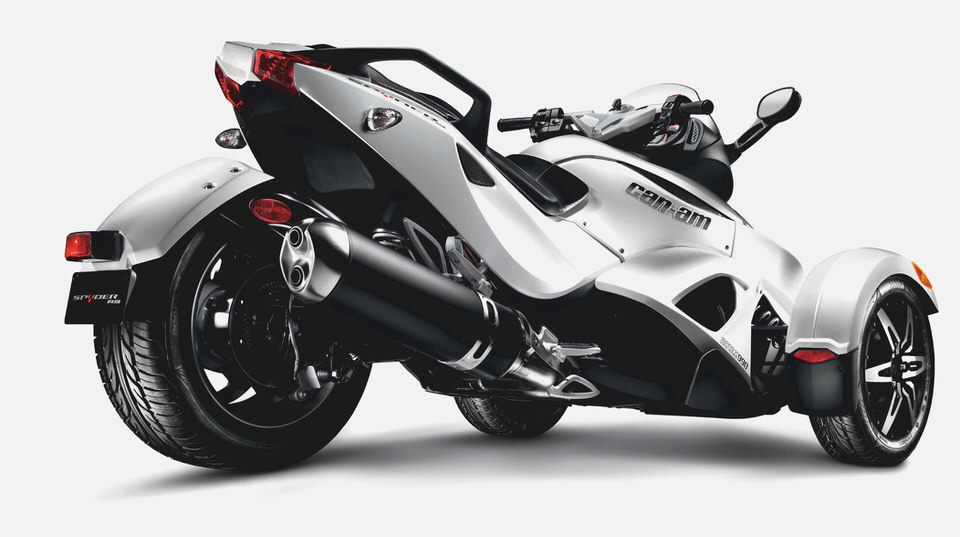
Your message has been sent!
I finally got my opportunity to ride this infamous three-wheeler that has onlookers everywhere doing a doubletake. Trike Riders Now reviewed BRP‘s Can-Am Spyder roadster in 2008 when the unusual three-wheeler first hit the market. TRN contributor Perri Capell test rode the Spyder then.
Now, two model years later with improved handling and more options, I’m getting my chance to feel firsthand what all the fuss is about.
Test riding the Spyder RS-S in Arizona.
Many people want to compare the Spyder to a trike. In no way does it handle like a trike, or a motorcycle for that matter. With its two wheels in front and one in back, Can-Am is calling the Spyder a roadster, creating a whole new category of on-road vehicles.
Walking up to my test unit, which is outfitted with a long list of Can-Am accessories designed specifically for this model, the press representative tells me to throw out everything I know about motorcycles and trikes and start with a clean slate mentally. To start, there is no hand brake lever or a clutch lever. Hmm, this ought to be interesting. He tells me to mount the Spyder by grabbing the handlebars, and while stepping with my left foot on the footpeg, swing my right leg over the seat.
It’s easier this way because riders not limber enough to lift their leg up and over the seat from a standing position can easily get on the vehicle. Seat height, so important for women and smaller-framed riders, is not an issue with the Spyder since the 29-inch height to the top of the seat is accessible regardless of the rider’s height.
Demonstrating how to get on the Spyder.
Ready to ride, with feet starting on the pegs as I roll on the throttle.
The RS-S with its 990cc V-twin engine comes standard with SE5 transmission and a 5-speed semi-automatic transmission, meaning no clutch to engage manually and no downshifting. The semi-automatic transmission downshifts for you. (On the RS version, you have to manually downshift.) Women who can’t grasp the clutch/throttle action on a motorcycle will greatly appreciate the semi-automatic feature of the RS-S.
I upshift manually by pressing my left thumb on a lever on the handgrip that even short fingers can access. Very easy to do, as the revs of the engine audibly signal you that it’s time to upshift, like upshifting in a manual transmission automobile. There is no fumbling of the gear shifter with your foot, no skipping a gear accidentally, no wondering if the gear actually engaged—just smooth transitions from one gear to the next via that hand shifter.
And a number on the digital dash lets you know what gear you’re in should you lose count. Power is sent to the rear wheel via a Kevlar reinforced belt drive.
Among the gauges on the part-analog/part-digital dash is a gear indicator, seen here on the bottom center of the digital gauge.
When you press on the brake, the engine automatically downshifts for you through the gears as the revs slow. I hear a noticeable clunking noise every time the engine downshifts from one gear to the next. The clunking seems overly loud, but I guess that’s a good thing to let me know the transmission is downshifting.
The gear shifter is identified with a plus sign.
I downshift manually to climb this hill, but find the Spyder slightly sluggish as the 700-pound machine makes its way up the grade.
The transmission is called semi-automatic and not fully automatic because if you want to manually downshift, you have that option. I use my left forefinger to press on the back of the shift lever toward me each time I switch a gear. Manually downshifting comes in handy when I’m climbing a hill and I need the engine in a lower gear to gain momentum and speed.
It works quite easily, and again reminds me of downshifting in an automatic transmission automobile.
Braking is probably the biggest feature to get used to on the Spyder in that there is no hand lever brake like on a trike. The only brake is a right-sided foot brake that, when pressed, actuates a fully integrated three-way ABS braking system. I press down hard with my toes to bring the Spyder to a stop.
While some decent pressure is needed to press down on the brake pedal, when engaged the Spyder comes to a halt rather sharply thanks to the 4 piston calipers clamping down on each wheel’s 260mm disc. Two times I had to brake fast when approaching an intersection due to a changing green light and trying to keep up with my motorcycle-riding buddies. I never felt like I’d be thrown from the vehicle coming to halt that fast.
In fact, I did sense the ABS coming into play as the vehicle came to a quick and firm stop. Sensors monitor each wheel independently and adjust to whatever wheel is at risk of locking up.
My test model’s footpeg and foot brake (including the parking brake on the opposite side) are custom billet ones, costing $94.99 each for the brake pegs and $229.99 for a pair of the rider pegs and passenger pegs. Stock ones are rubberized.
Another neat feature to have on the Spyder that allows virtually anybody to ride it, regardless of size or strength, is the reverse gear, a transmission-based reverse (versus a separate motorized reverse found on some trikes), which is in place of a sixth gear. Too bad BRP couldn’t have kept the sixth gear and reverse. More on that later.
You simply put the gear in neutral—this ensures the vehicle is not moving—then press the R button on the left hand controls and simultaneously shift down into reverse. Twist the throttle to move the bike backward. Speed is limited to 12 mph (about 20 km/h). Forgetting I had reverse available to me, I attempted to put my feet down to push the vehicle around but realized that with the wide profile of the Spyder, I barely touched the ground and couldn’t do it.
Thank goodness for that reverse gear, which is easy to use once you get used to it.
The parking brake, located on the left side behind the footpeg, is engaged and disengaged by pressing down on it hard with your foot. If you forget to disengage it, a light flashes on the dash when starting the vehicle.
Some pressure is needed to step down on the parking brake. My foot kept slipping off the smooth-surfaced billet peg, and when doing so, my shin bashed into the footpeg several times. Maybe that wouldn’t happen with the stock rubber brake pedal.
While the riding position is ergonomically just right, I had to get used to the more aggressive stance.
The riding position is one I’m not used to as a cruiser rider— that is, having to lean forward to the flat-ish handlebars, my feet positioned behind me. If I were to tour on the Spyder, I’d prefer the more upright seating position that’s available on the touring version of the Spyder, the RT. I could install the 1-inch aftermarket riser that sells for $44.99 to bring the bars higher, not closer.
Or I could buy aftermarket bars from Helibars, which bring the bars closer. Sportbike riders may like this riding position, but for me, the aggressive stance of the RS-S lends itself to short day rides and zipping around town. The stock seat on the RS-S is comfortable enough for any length of ride, and the generous 7.1 gallon fuel capacity and 30-35 mph average fuel range will tempt you to take the Spyder out for long jaunts.
The RS-S features a special-edition seat with color-matched stitching (in this case, white) and a textured thigh area so your legs stayed gripped to the seat. This photo also shows the black side panel trim for knees to rest on, a $109.99 custom part added to the vehicle I was testing.
How Does it Ride?
I press my thumb once to click into first gear and twist the throttle, and the 990cc Rotax V-Twin moves me forward quicker than I expect. With the large-feeling 700-pound vehicle beneath me, I expected the 990cc engine to respond slower, but throttle response is quick and precise partly due to multi-point fuel injection with 57mm-diameter throttle bodies.
BRP marketing notes claim 0 to 60 mph in 4.5 seconds. I didn’t test that, but I could see how that is possible.
This three-wheeler is nimble, precise and downright quick, qualities I think surprise those who ride it—and what distinguishes it from most trikes. With that said, I could not keep up with my two riding buddies—my husband on his Harley-Davidson Road King and my photographer on his Honda 600cc sportbike—when coming off the line, but out on the highway in cruising mode it was easy to stay side-by-side, as most of the Spyder’s torque is felt in the mid-range of the powerband.
Peak torque is 77 foot-pounds at 6250 rpm. And riding between a cruiser and a sportbike, the Spyder feels more sportbike-ish, achieving 106 horsepower at 8500 rpm, according to BRP marketing notes. Redline is at 9500 rpm.
Riding between 70 to 75 mph, I felt the need for a sixth gear as the engine revved high. It would have been nice to have a sixth gear overdrive to slow the revs down while maintaining speed, but like I mentioned earlier, sixth gear was sacrificed for that reverse gear.
How does it corner? Thanks to the dynamic power steering feature on the Spyder that adjusts the amount of steering effort required based on acceleration speed and steering angle, the Spyder corners quite easily with absolutely no feeling that the wheels will come off the ground. No muscling of the handlebars like a rider must do on a trike, as most are not equipped with power steering.
The Spyder is loaded with features—special systems— listed by acronyms like VSS, SCS and TCS that explain how the three-wheeler is engineered in terms of stability and traction control. If you want to learn more, visit Spyder’s Web site listed at the end of this article.
I liken the cornering to how it feels to drive a Porsche sports car. Back in the 1980s, I had the pleasure of piloting a friend’s classic Porsche 911 (haven’t driven one since) and recall how the vehicle felt like it was hugging the road, requiring minimal steering effort as the vehicle snakes from one lane to the next while making its way through corners. I remember it distinctly because it was so different than your average automobile.
That’s how the Spyder felt to me when moving in and out of traffic.

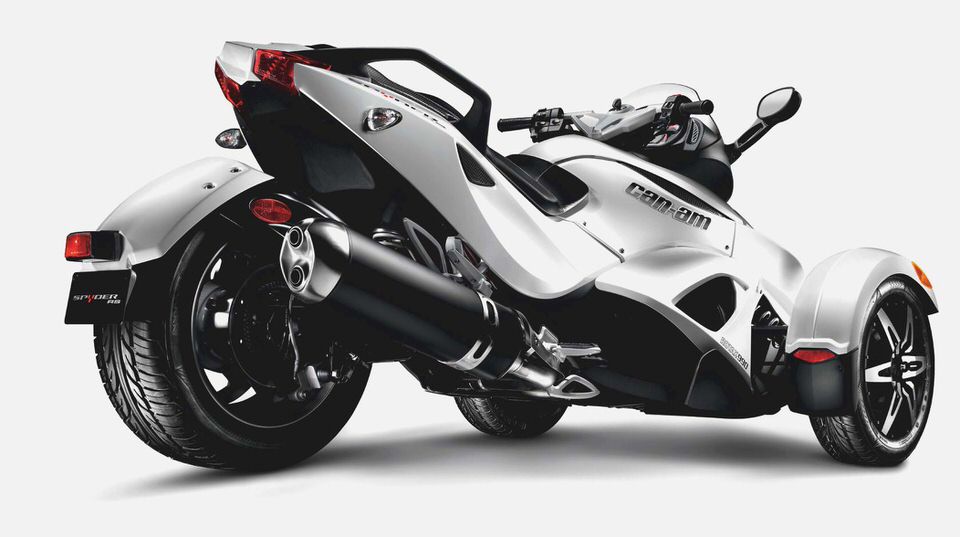
A decent turning radius allows me to turn the Spyder sharply, and the “Vehicle Stability System” reduces the risk of losing control.
The Spyder is built on its own proprietary chassis, the SST Spyder (Surrounding Spar Technology), with a swingarm in the rear anchored by a monoshock that provides 5.67 inches of travel. Front suspension is essentially a Double A-Arm, arms that come out from the center of the chassis to each of the front wheels, forming an A. They have built into them an anti-roll bar that assists in keeping the tires firmly on the ground.
The coil shocks in front provide 5.67 inches of travel. Front tire size is 154/65R14.
The cam in the rear shock is adjustable, though I’d leave it to a trained technician to adjust. Rear tire size is 225/50R15.
I was pleased with the very smooth ride. Quite frankly, I didn’t know what to expect. I was used to front-end wobble, or head shake as it’s called, as well as bump transfer from front to rear tires, both so prominent on trikes. On the Spyder, if you hit a bump with one of the 165 millimeter front tires, it’s unlikely you’ll roll over it again on the rear tire because it rolls on a different track that’s positioned between the two front tires.
If the rear tire hits a bump that the front ones missed, the Spyder’s generous rear suspension travel eats up most of the vibration.
Here’s a clear view of the swingarm, shock, 2-into-1 exhaust, and 260mm brake disc with single piston caliper.
There’s not much to dislike about the Spyder, as it’s well engineered and ergonomically dialed in for a variety of riders. And you can’t really compare it to another on-road vehicle because there is nothing else like it, a fact BRP capitalizes on in its marketing.
If I had to be picky, the gauges overload you with too much information. In addition to the digital speedometer, there is a large analog speedometer on the left and a full analog tachometer on the right. Directly underneath the digital speedometer readout is the temperature in a font size nearly as big as the mph. When glancing down at the dash, you’ll have to realize 95 degrees doesn’t mean 95 mph.
Not sure why the temperature number is that large, and quite frankly, I’ve yet to find an onboard temperature sensor on any motorcycle (not that the Spyder’s a motorcycle) that’s accurate, as engine heat compromises the readout.
Among the gauges on the part-analog/part-digital dash is a gear indicator, seen here on the bottom center of the digital gauge.
Then there were numbers I had no idea about until I asked. HRT and HR kept popping up when I turned on the vehicle. Hours running per trip (how long the vehicle’s been running for that trip) and hours on the unit (for servicing purposes) are statistics I have no need to keep track of.
Although here’s a plus: because BRP is a Canadian company, a toggle switch on the unit gives it the ability to register speed in kilometers per hour or miles per hour, a nice feature if you decide to ride into Canada, or vice versa.
Here’s my shot of the dash again with the analog speedo to the left of the digital one and the large 95F temperature reading below the 0 indicating speed.
A generous 11.62-gallon storage area is accessible by lifting the front hood. I never understand why storage is measured in gallons or liters. I’m not going to store liquid in there.
An oversized backpack and extra riding gear can easily fit. At night, the front headlight beam reflects off the inside of the white hood, illuminating the area so you can see inside.
Dress up your Spyder: my test unit has the custom handgrips (fancy higher-end rubber) for $34.99, Phantom Black 6-spoke wheels for $549.99 a pair, and an ultra sport windshield for $144.99 that looks cool but doesn’t block the wind much at all.
The Spyder has a lot of tangible and intrinsic value for the pricey $18,799 retail cost of owning one of these high-end semi-automatic beauties. I don’t feel you’re sacrificing anything in terms of an open-air ride with this vehicle. Notice I never once called the Spyder a motorcycle, because it is not.
It’s a new concept offering many qualities of the ride of a motorcycle, while providing many new ones unique to its own class of being a roadster.
Specs At A Glance: 2010 Can-Am Spyder RS-S
Displacement: 990cc V-Twin
Fuel Capacity: 7.1 gallons
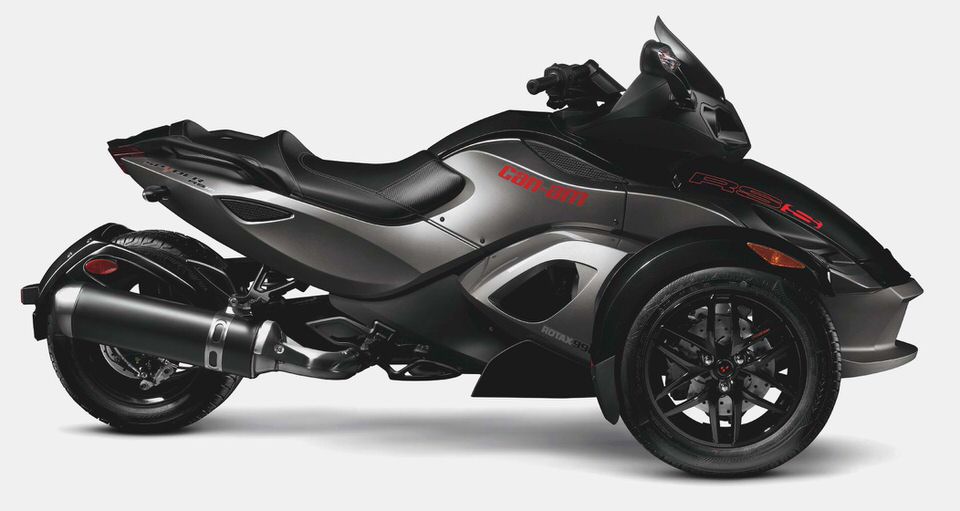
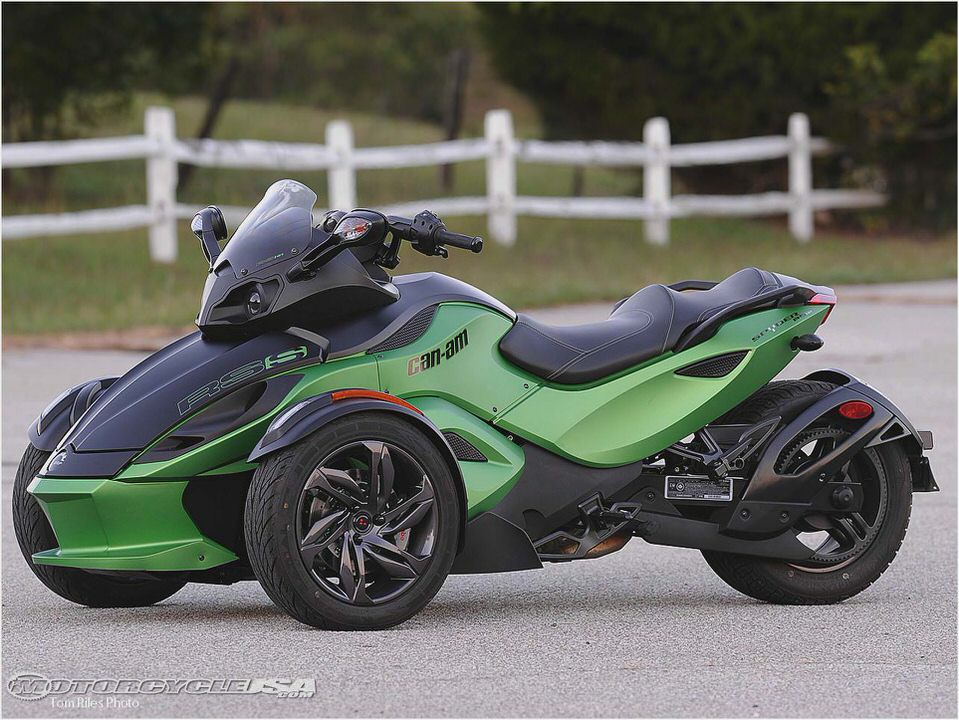
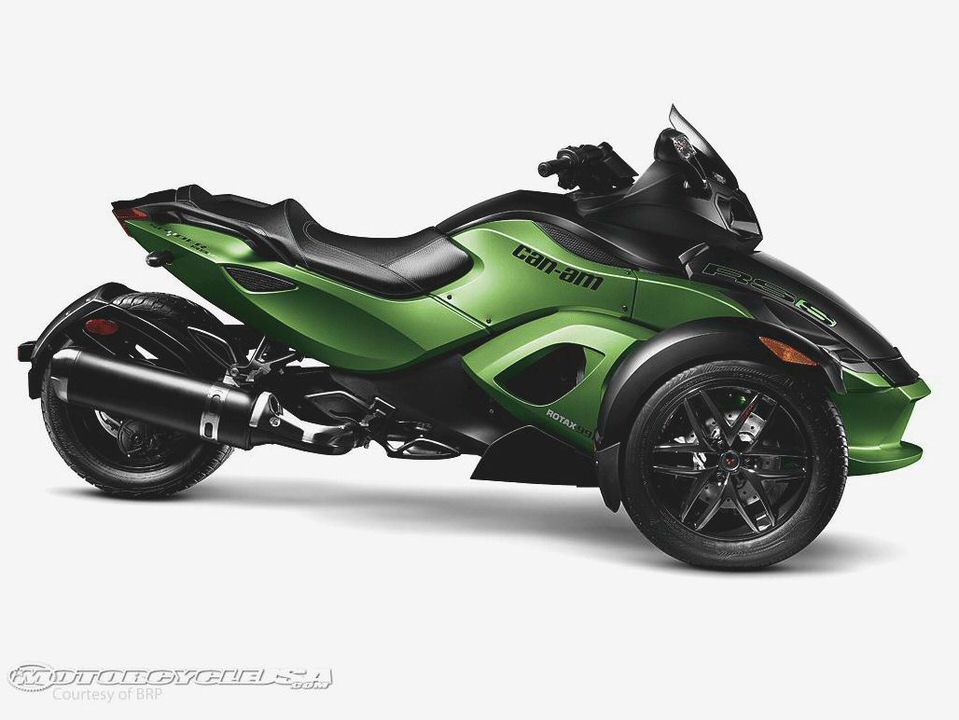
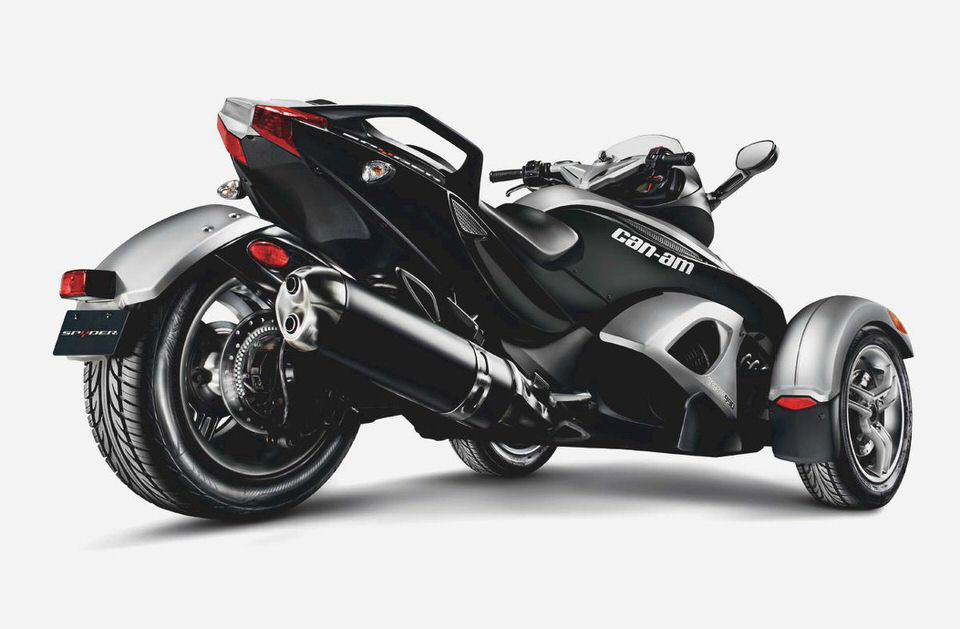
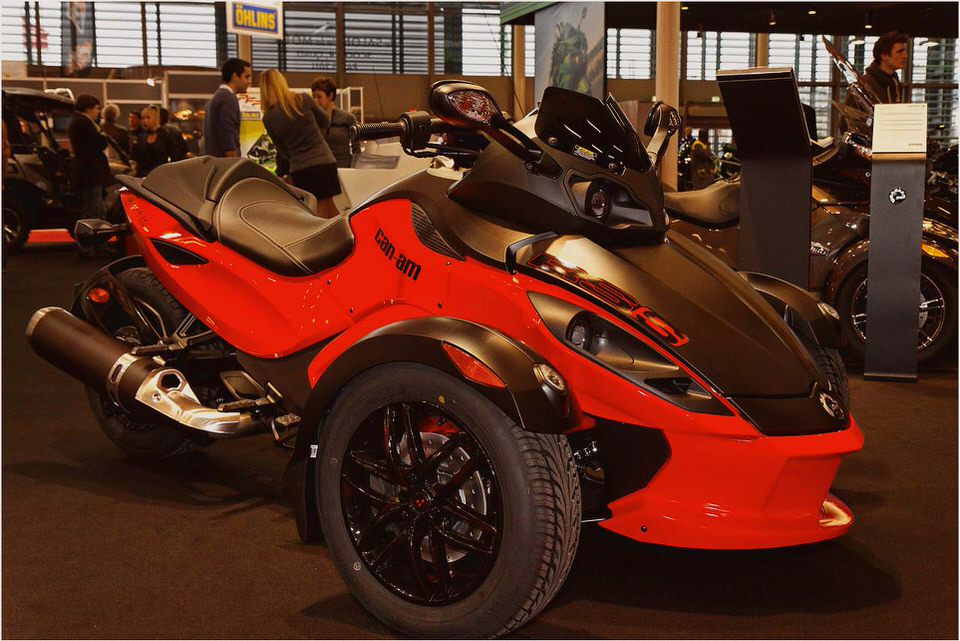
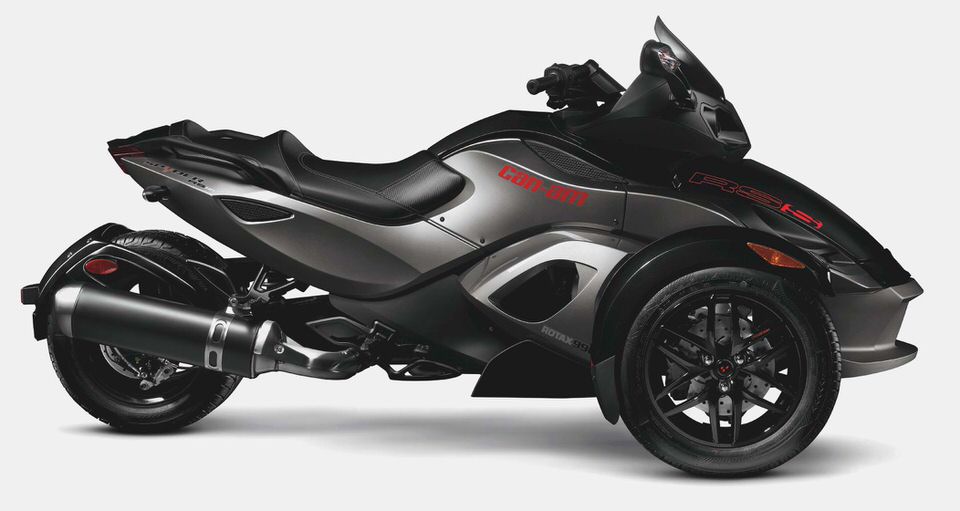
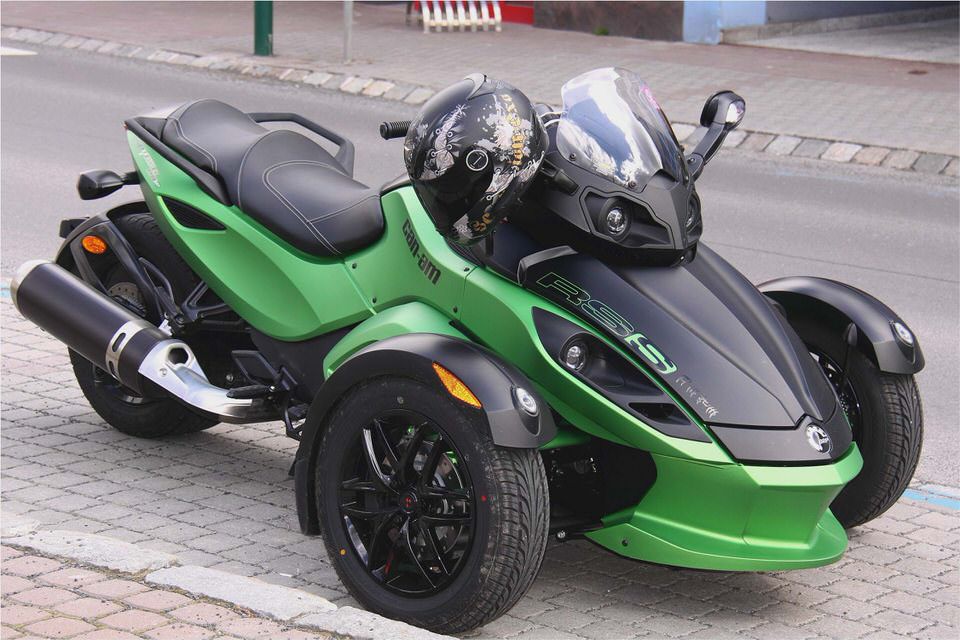
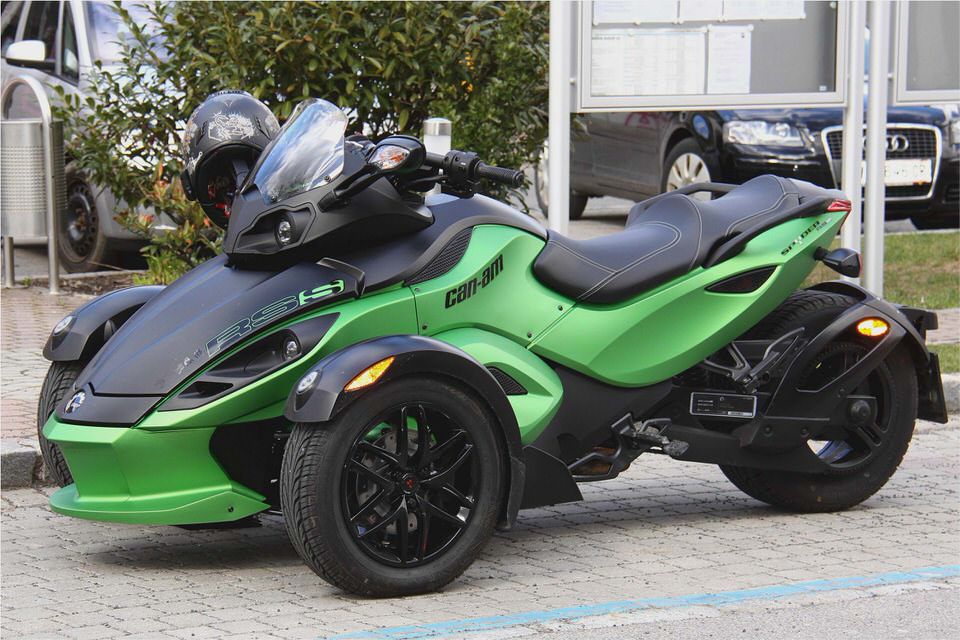

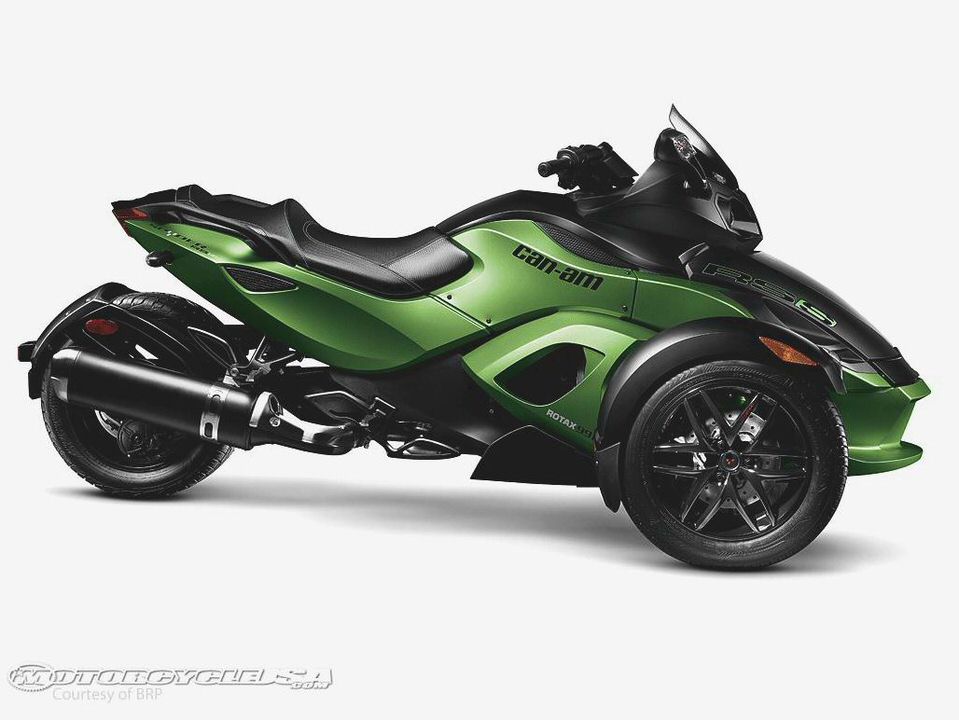
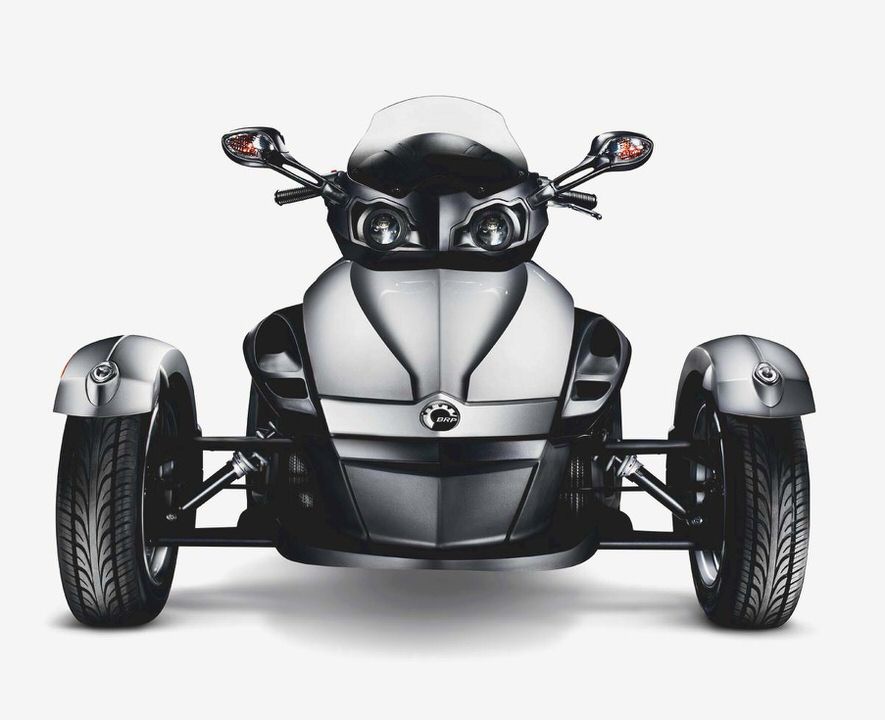
- 2011 Can-Am Spyder RS-S Road Test Rider Magazine Can-Am Spyder Motorcycle…
- 2013 Can-Am Spyder RS-S motorcycle review @ Top Speed
- 2014 Can-Am Spyder RS-S motorcycle review @ Top Speed
- Can-Am Spyder RT-S- Long-Term Wrap-Up- Long-Term Motorcycle Reviews
- 2010 Can-Am Spyder RT-S Road Test Rider Magazine Can-Am Reviews
